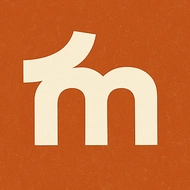Dark R&B is no longer an underground aesthetic, it’s gradually becoming one of the most influential sounds in modern music. What started as a niche, emotionally heavy branch of R&B has evolved into a full ecosystem of production techniques, storytelling patterns, sonic textures, and late-night emotional psychology.
As we move into 2026, the genre is not simply growing…
it’s transforming.
This article explores why Dark R&B is expanding, what defines its sound, and why more producers, songwriters, engineers, and listeners are gravitating toward it.
A Genre Built on Emotionally Precise Storytelling
While most mainstream music relies on broad themes, Dark R&B works differently:
it zooms in on specific emotional details.
Instead of saying “I miss you,” the genre focuses on the text you almost sent at 2:38 AM, the voice in your head asking what went wrong, the regret that lingers after desire burns out.
This micro-emotional approach creates stories that feel:
intimate
relatable
psychologically rich
cinematic
deeply personal
That’s why listeners describe Dark R&B as “journal-like” or “late-night honesty.”
From a writer’s perspective, this requires precision, not clichés.
And that’s one of the genre’s biggest strengths.
Minimalistic Production With Cinematic Impact
Producers are increasingly drawn to Dark R&B because it relies on clean, atmospheric, elastic production, not overcrowded arrangements.
Typical elements include:
Pads & Ambience
Soft, slow-moving pads that create emotional tension.
Sparse Drums
Mid-tempo beats, soft 808s, rimshots instead of snares, and long reverb tails.
Wide Vocals
Layered harmonies, whispered doubles, reverse textures, and harmonics.
Space
Silence is part of the production.
The lack of sound creates emotional gravity.
The challenge and the beauty is that every sound has to matter.
There’s no room to hide behind busy arrangements.
Emotional Engineering: Why Listeners Play It at Night
Data from streaming platforms consistently shows that Dark R&B spikes:
late evening
nighttime
early morning
during introspective activities (studying, commuting, journaling)
Why?
Because the genre works almost like emotional engineering:
low-end frequencies calm the body
ambient pads slow the breathing
intimate vocals create psychological closeness
introspective lyrics trigger self-reflection
It’s music designed for the hours when people stop pretending and start feeling.
The Global Expansion of Dark R&B
One of the most surprising aspects of the genre’s evolution is how global it has become.
The new wave isn’t limited to North America, it’s spreading through:
Europe (Italy, Germany, France)
Latin America (Brazil, Chile, Mexico)
Middle East
Southeast Asia
Artists from each region bring unique cultural fingerprints:
Latin melancholy
European minimalism
Middle Eastern melodic scales
Brazilian emotional storytelling
This fusion is shaping the next version of Dark R&B.
The DIY Movement: Independent Artists Are Leading the Wave
Dark R&B has become one of the most DIY-friendly genres, because:
it can be produced in a home studio
Small vocal setups work perfectly
Emotional intimacy doesn’t require expensive hardware
Fans love authenticity over perfection
Platforms like Reddit, Medium, and Tumblr have helped smaller artists build communities around emotional storytelling.
And because Dark R&B relies on identity, not budget, it creates a fairer ecosystem for independent musicians.
Why 2026 Might Be a Historical Year for the Genre
A few reasons:
More producers are shifting toward atmospheric sound design
Ambient pop, alternative R&B, and soft trap influence the direction of mainstream music.
Listeners crave emotional depth more than ever
Streaming fatigue makes people prefer music with narrative substance.
The international scene is expanding
Cities like Milan, Berlin, São Paulo, and Toronto are becoming new creative hubs for the genre.
TikTok and YouTube Shorts push emotional storytelling
Short emotional hooks bring people to full-length tracks.
Dark R&B is positioned between intimacy and cinematic tension, the perfect formula for 2026.
What Makes Dark R&B Harder to Produce (But More Rewarding)
People often underestimate how much skill the genre requires:
subtle vocal engineering
careful EQ balancing (intimate vocals need space)
creative reverb/delay design
minimal but effective drum programming
writing that feels real, not performative
It’s the genre where everything is exposed.
No loud drums, no big synths to hide behind only honesty and craft.
But when done well, the emotional payoff is huge.
Final Thoughts
Dark R&B is becoming one of the defining sounds of the mid-2020s:
intimate, atmospheric, global, psychological, and artist-driven.
Its rise is not an accident, it’s a response to a world that wants truth, vulnerability, and emotional detail in music.
As we move further into 2026, this genre will continue to evolve, blending cultures, production styles, and late-night emotional storytelling into something both deeply personal and universally relatable.
If you're a listener, a producer, or a songwriter, the Dark R&B wave is one you shouldn’t ignore.



Top comments (2)
I've never really heard the term "Dark R&B" specifically before but I like the vibe of what I've read here! I think you're on to something. Gonna keep an ear out.
Thank you Mikey, accually the Dark comes from the minimalism and how the song has always a strong reese bass, this bass makes the song to be a lot more dark. It’s basically the more emotional, late-night side of moderm R&B now. Slower production, intimate lyrics, and a mood that feels personal. Once you notice it, you start hearing it everywhere.